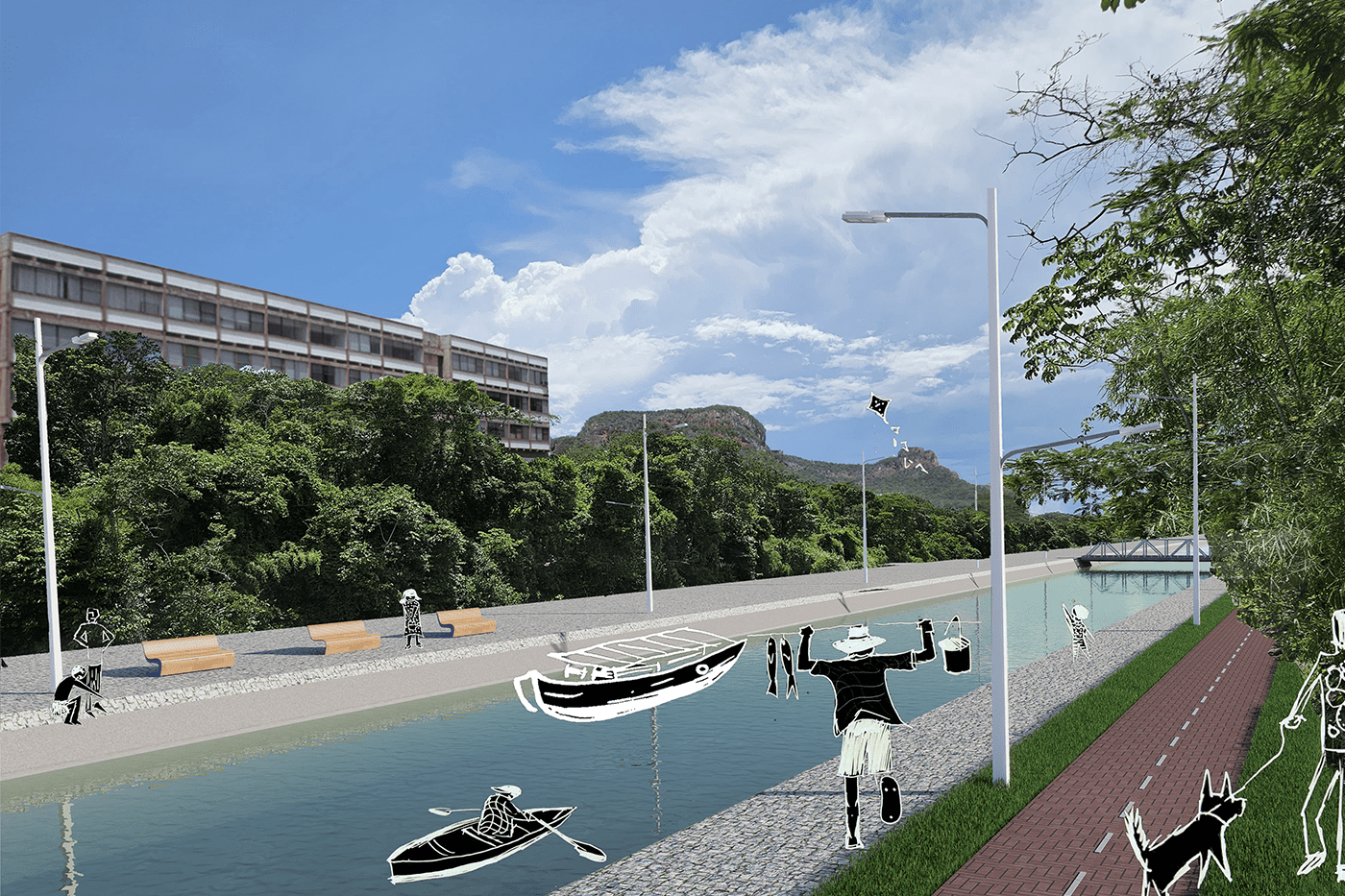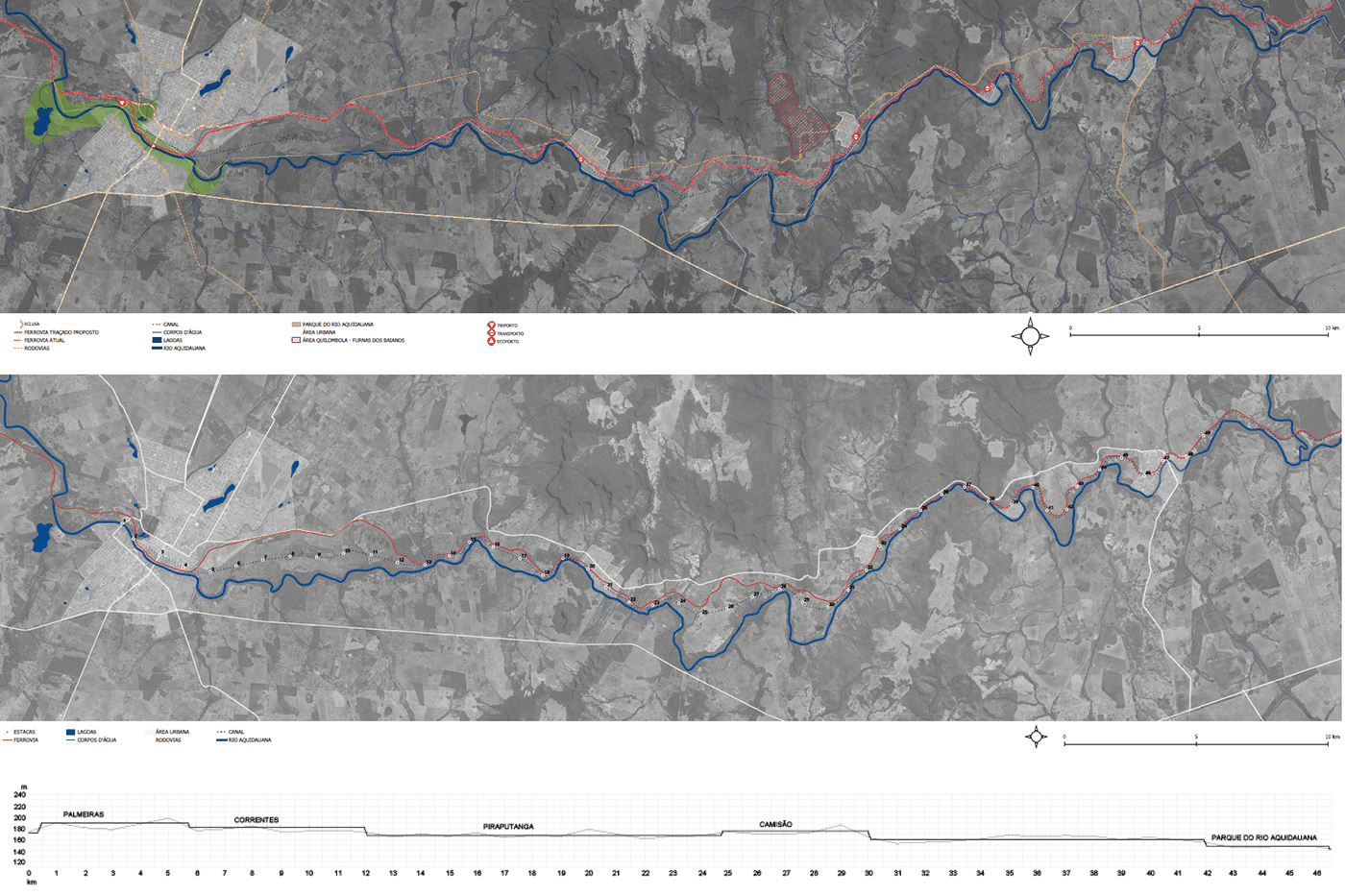Project implementation: Brazil
Project development: Brazil
Students: Bianca Purkott Cezar, Lívia Tinoco da S. Furtado, Pedro A. de Jesus, Rodrigo M. de Souza
The production of space is a process conditioned by the means of production. Space can be conceived as a set of systems of objects and systems of actions. Adopting the perspective of historical materialism, a system of objects is synonymous with a set of productive forces, while a system of actions is the set of social relations of production. The very "discovery" of Brazil is a direct consequence of the need for expansion faced by the development of European mercantile capitalism. Brazilian built space emerged from hereditary captaincies and expeditions aimed at capturing indigenous labor. It was from the monsoon routes along the rivers of the Brazilian interior and, later, from railway stations, that our cities expanded. The expansion of the economic dynamics of South American countries abroad is one of the factors that led to the formation of customs unions and blocs of intergovernmental organizations, such as the Union of South American Nations (UNASUR). The South American Regional Infrastructure Integration Initiative (IIRSA) emerged from the organization of Unasur. Its planning established a series of councils, including the South American Infrastructure and Planning Council (COSIPLAN). This initiative resulted in several infrastructure projects for the transportation of goods between member countries, infrastructure planning, and regional connectivity. Among the projects developed is the improvement of the Brazilian railway section between Santos (SP) and Corumbá (MS). The reactivation of this section offers the opportunity to rethink its impact on the territory and how to use transportation infrastructure to promote development that positively impacts the populations of the municipalities it crosses. Among the municipalities crossed by the Western Network, Aquidauana stands out for its proximity to the urban area of Anastácio. Initially, the two cities occupied the left bank of the Aquidauana River, now Anastácio. When the Northwest Brazil Railway was built on the right bank, now Aquidauana, the presence of the railway station triggered rapid growth and crowding on this bank, resulting in rivalries and territorial division. The reactivation of the Western Network presents a second opportunity to address the railway and the waterway, as addressing the railway that follows the river's course also means addressing the river itself, urban water, environmental sanitation, and urban solid waste. This approach is crucial for both cities, which suffer from periodic major floods and need to adopt a resilient model to the worsening climate crisis. Here, we discuss one of the possible developments in the environments of the cities of Aquidauana and Anastácio, based on their relationship with the railway, water, and solid waste management.




